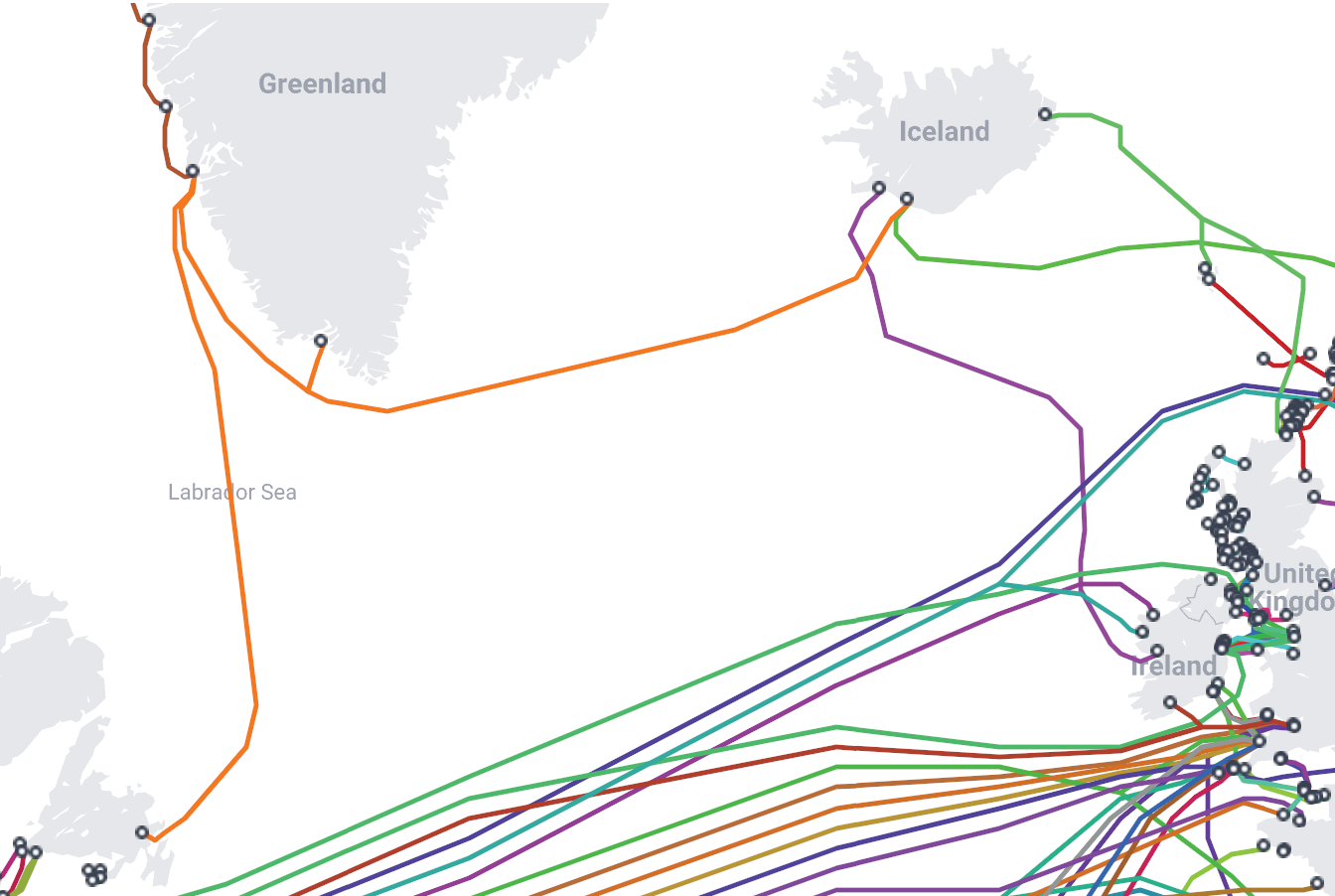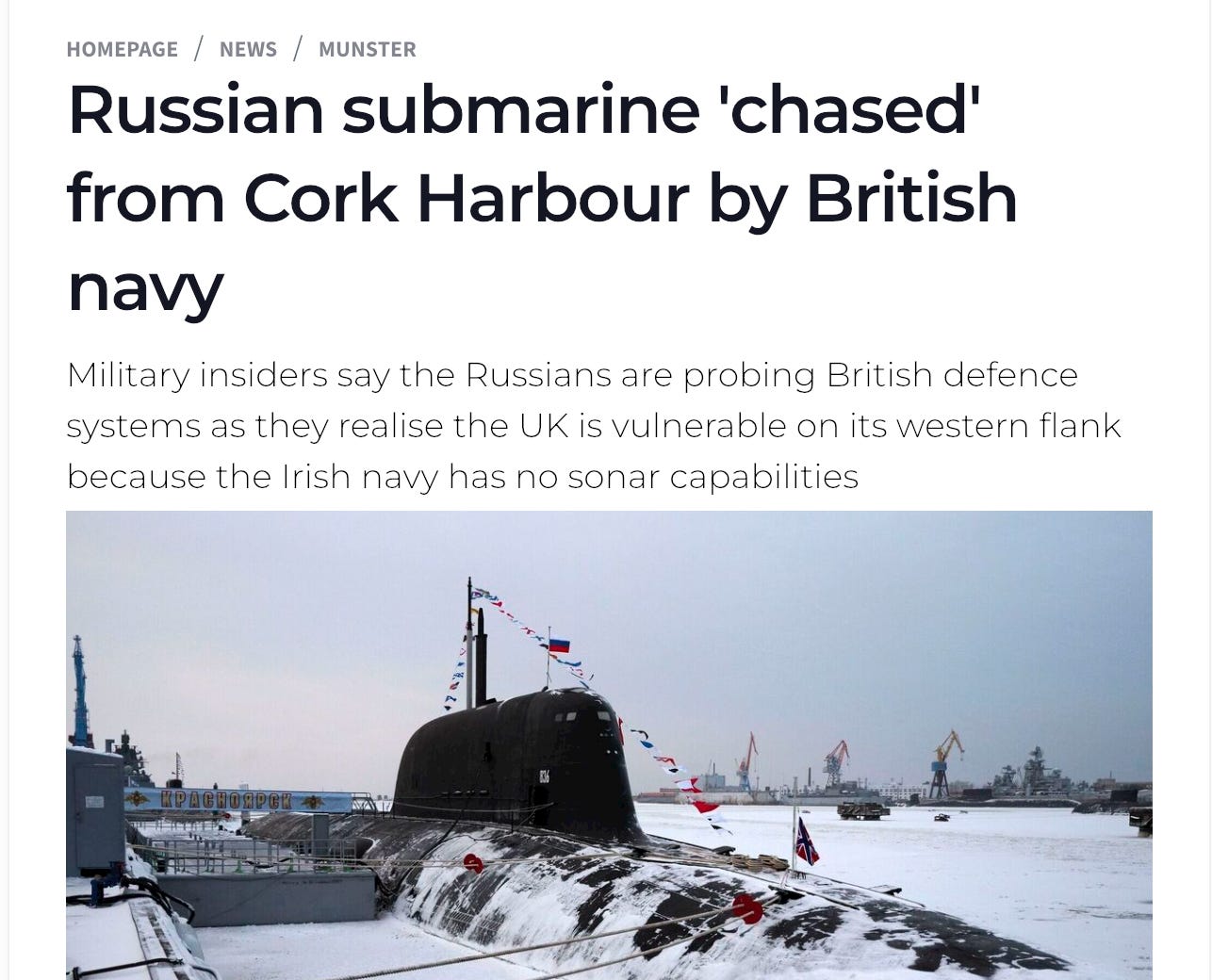The Everyday Repercussions to Ireland if Transatlantic Cables Are Cut
Not being able to access social media will be the least of your troubles
In an increasingly interconnected world, the seamless flow of information across continents is vital to the functioning of modern economies and societies. For Ireland, a small but globally connected nation, transatlantic cables are the lifelines that enable communication, commerce, and connectivity with the rest of the world. These undersea cables, which carry vast amounts of data between North America and Europe, are critical to Ireland’s digital infrastructure. But what would happen if these cables were cut? The repercussions would be far-reaching, affecting everything from business operations to everyday life for Irish citizens.
The transatlantic fibre optic cables are the unsung heroes of the digital age, who would sever them? Maybe it’s a rogue Chinese trawler, a spiteful Kraken, or, more likely, a Russian submarine, whatever the cause, the result is the same: Ireland is cut off from the digital motherlode of North America and the rest of the globe.
First, the silence. Not the kind of silence you get when the pub empties after last call, but a deafening, existential silence. The kind where your WhatsApp messages just sit there, mocking you with a single grey tick. Zoom calls or Teams meetings with your international colleagues? Your pixelated face will freeze mid-sentence, leaving you looking like a buffoon in the middle of a PowerPoint presentation about “synergy” or “leveraging best practices.” Even basic communication tools like email and instant messaging will experience delays, as data packets would need to be rerouted through less efficient pathways. Many online services and websites hosted in North America would become less accessible or completely unavailable, affecting everything from social media platforms to news websites. Online gaming, which relies on low-latency connections, would become nearly impossible.
Every single app on your phone will eventually stop working. No more podcasts, tinder, grindr, Tikok or whatever you're having yourself on social media. Streaming services, the lifeblood of modern entertainment, are finished. You’ll probably have to read a book.
Ireland’s economy is like a high-wire act performed by an over-caffeinated trapeze artist—thrilling, precarious, and almost entirely dependent on American multinationals for our tax revenues and fibre optics not failing. These fibre optic cables are the safety net. Cut them, and suddenly, the tech giants in Dublin—Google, Facebook, Microsoft, and the rest of the gang—are left twiddling their thumbs. Cloud services? Down. Data storage? Kaput. Software updates? Not happening.
Multinationals and Irish businesses that rely on just-in-time inventory systems or global supply chains would face delays in ordering, shipping, and receiving goods, leading to increased costs, potential shortages and massive job losses.
The financial sector won’t fare much better. Ireland is a hub for financial services, including banking, insurance, and fintech. Trading platforms are frozen, payment processing systems and real-time financial data feeds would be about as reliable as the Irish weather, potentially causing losses in the millions of euros. Your salary probably won’t be paid either. Especially if you work for a multinational. If people don’t have money to pay for the basics, well, you get the picture.
Ireland’s universities and research institutions pride themselves on being at the cutting edge of innovation. But without those transatlantic cables, they’re back to the Stone Age. Online lectures? Forget it. Virtual labs? Not a chance. Researchers trying to collaborate with their counterparts across the globe might be better off sending carrier pigeons—or, more likely, waiting weeks for data to trickle through alternative routes.
The truth is, that Ireland’s economy and society are hooked on data. Ireland is a nation tethered to the world by a fragile web of undersea fibre-optic cables, suddenly cut adrift. The result? Chaos. Not the chaos of our politicians shouting at each other across the Dáil chamber, but the kind that grinds businesses to a halt, silences communication, and leaves everyday life gasping for digital air. The sheer volume of data coursing through these submerged lifelines is staggering, and their disruption would ripple across the island like a digital tsunami.
95% of all global data courses through these undersea cables, of which 75% of all cables in the Northern Hemisphere pass through or near Irish territorial waters.
The cutting of transatlantic fibre optic cables would have profound and immediate repercussions for Ireland, affecting everything from business operations to everyday life. While Ireland has some redundancy in its digital infrastructure, the sheer volume of data that flows through these cables means that any disruption would have potentially catastrophic consequences across the economy and society. To mitigate these risks, Ireland must continue to invest in alternative connectivity solutions, such as satellite communications and additional undersea cables, while also collaborating with international partners to ensure the resilience of global digital infrastructure. As abhorrent as it might be to some, that means investing in military deterrents. In an era defined by connectivity, the importance of these invisible undersea lifelines cannot be overstated.
Of course, this is the doomsday scenario. The Russians would never do something like that, right?
Source Irish Examiner.







Our government and dept of defence is playing the ostrich about this!!
I trust the Royal Navy will be called in!